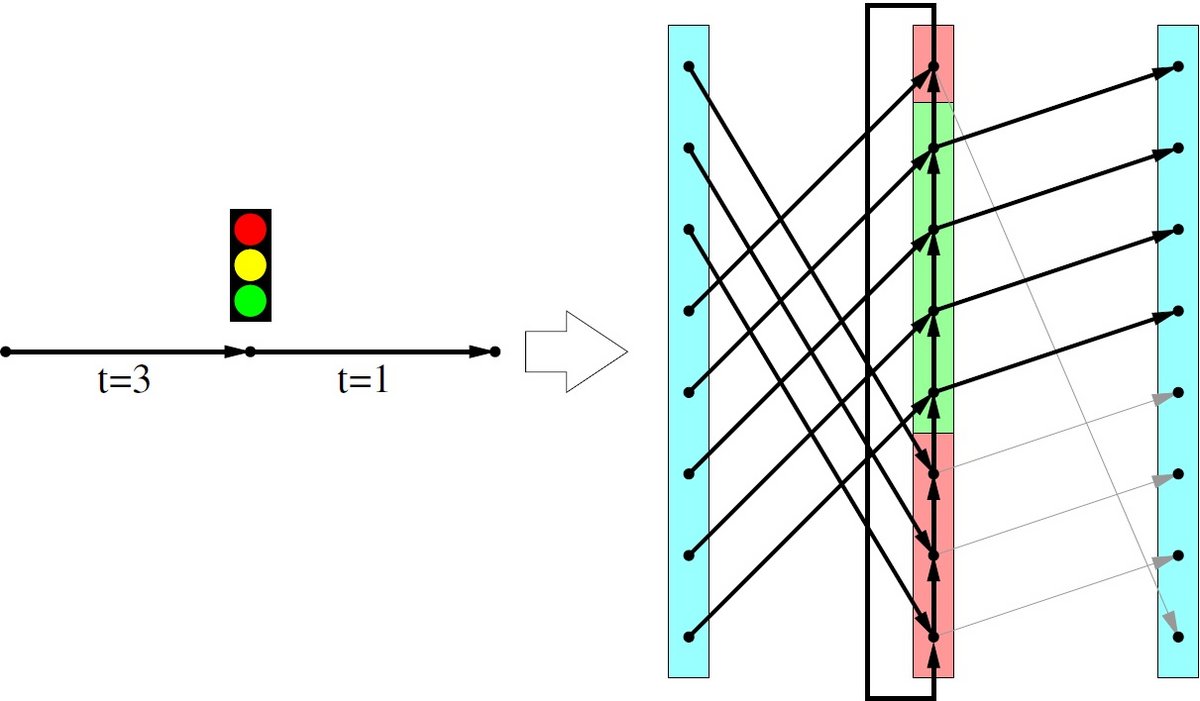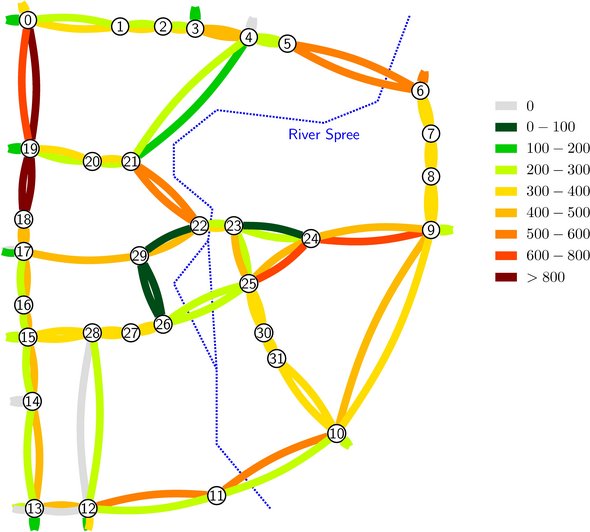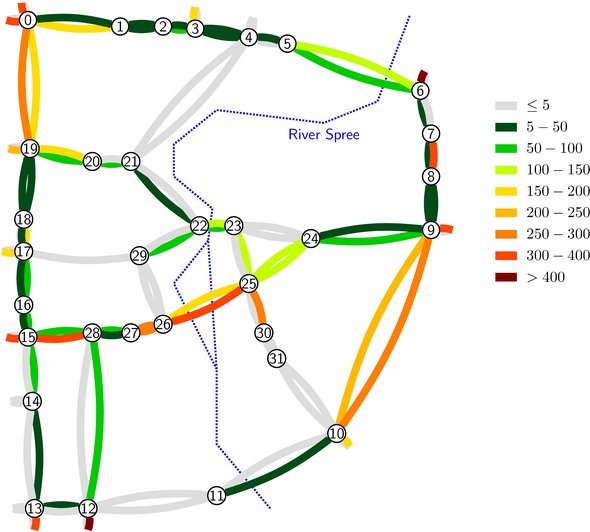Optimization and network-wide analysis of light signal system controls
This joint project of BTU and TU Berlin aims to interactively improve the theoretical and practical understanding of inner-city traffic influenced by traffic signals.
Most drivers are interested in the fastest possible route to their destination. However, green waves for all are not possible, resulting in waiting times at traffic signals. If you want to minimize these waiting times by changing the traffic light settings, you also change the travel times of the road users. It is possible that they will now look for new routes to their destination and that the new traffic load will make routes that have just been optimized worse again.
Therefore, a cyclically time-expanded optimization model for traffic signals is developed at the BTU, which optimizes coordination, green splits and traffic rerouting simultaneously. In this way, the described effect is not only avoided, but can be even exploited for particularly efficient traffic light settings. The cyclically time-expanded network model does not only represent the spatial information, because a temporal component additionally allows the modeling of traffic lights and temporally staggered traffic flows. In particular, the model does not depend on auxiliary constructions such as travel time functions, but can represent platoons of vehicles and waiting times at intersections in a very natural way.

Offset times and green splits can be described in this model via integer variables and linear equations. In order to minimize waiting times, the main task then lies primarily in solving the resulting integer linear optimization problem. Even for smaller networks such as the Cottbus city center, the resulting optimization problems have several hundred thousand variables. Since such problems usually can not be solved exactly, we develop adapted branch&bound methods, effective lower bounds and new cutting plane approaches.


The resulting algorithms for the design of efficient fixed-time traffic light control systems in inner-city networks should be applicable for different scenarios and usable for high traffic volumes. Furthermore, the robustness of the methods and the sensitivity of the solutions with respect to changes in the traffic pattern will be investigated. Furthermore, the efficiency of the algorithms will be improved. Our partners at the TU Berlin compare the optimized fixed-time control systems with a recently developed adaptive methods for traffic signal control. Not only are the common indicators considered, but also the influence of the control methods on traffic demand is investigated. Since it is not clear how traffic reacts to a traffic signal control system that adapts to the current traffic pattern, the simulation methodology is improved to be able to represent such situations in a simulation-based manner. The simulation software used is the microscopic dynamic multi-agent simulation MATSim.
Partners
This project was being carried out jointly with the Chair of Transport Systems Planning and Transport Telematics of the Institute of Institute of Land and Sea Transport Systems at the TU Berlin. The project was funded by the DFG.
Contact
For more information, please contact:
- Prof. Dr. Ekkehard Köhler (ekkehard.koehler(at)b-tu.de)
- Robert Scheffler (robert.scheffler(at)b-tu.de)
